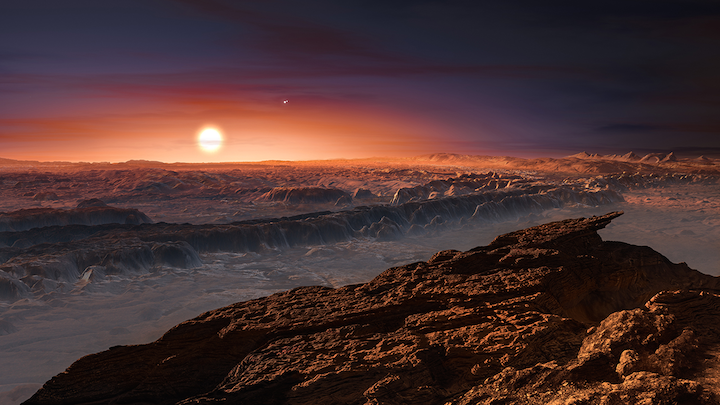Closest alien world to our solar system could be ripe for life, models suggest
Could alien life reside close to our stellar neighborhood? Astronomers are taking that question a bit more seriously as new models increasingly suggest that the closest Earth-like planet to our solar system could be habitable. Researchers first started playing a bit of “fantasy exoplanet” with the rocky world—dubbed Proxima b—last year after scientists discovered it orbiting our nearest neighbor star, Proxima Centauri. With knowledge only of the luminosity of the star (1/600 that of the sun), the mass of the planet (1.3 times that of Earth), and the length of its orbit (11.2 days), the team was able to predict that, with a variety of possible atmospheres, it would be possible for Proxima b to harbor liquid water on its surface. Now, another team has upped the level of detail by taking a climate model designed for Earth—the Unified Model developed by the United Kingdom's Met Office—and pasted it onto Proxima b. We have no real idea what the atmosphere of Proxima b is made of, but for the sake of argument the researchers tried out an atmosphere like Earth’s as well as a simpler one—mostly nitrogen with a dash of carbon dioxide. They also played around with the orbit, making it a bit more elliptical, and tried turning down the star’s brightness dial—there’s some uncertainty over both these factors in observations. And they looked at the likely scenarios of Proxima b being tidally locked—always presenting the same face to the star—or making three spins for every two orbits. As the team reports today in Astronomy & Astrophysics, it found an even wider range of circumstances in which Proxima b could have liquid water than the earlier study. The fact that the two very different models agree so closely is “somewhat remarkable,” the team writes, and gives confidence that, when more details about Proxima b and other exoplanets come in, their predictions will be less fantasy and closer to the facts.
Quelle: AAAS

